Abstract
Benzene has been known to be a bone marrow poison for almost a century. However, it was not until the last decade that benzene's carcinogenic potential was demonstrated by epidemiologic studies. The proposed regulation by the Occupational Safety and Health Administration (OSHA) to lower exposure levels of benzene in the workplace, and the court challenges that followed, have made the evidence of benzene toxicity a frequent topic of discussion and analysis. Epidemiologic evidence of leukemia risk associated with benzene exposure is summarized, including a discussion of certain contentions raised during the OSHA hearing. Special attention is given to information on specific cell types of leukemia associated with benzene and to qualitative and quantitative assessments of health risks associated with low-level benzene exposure.
Full text
PDF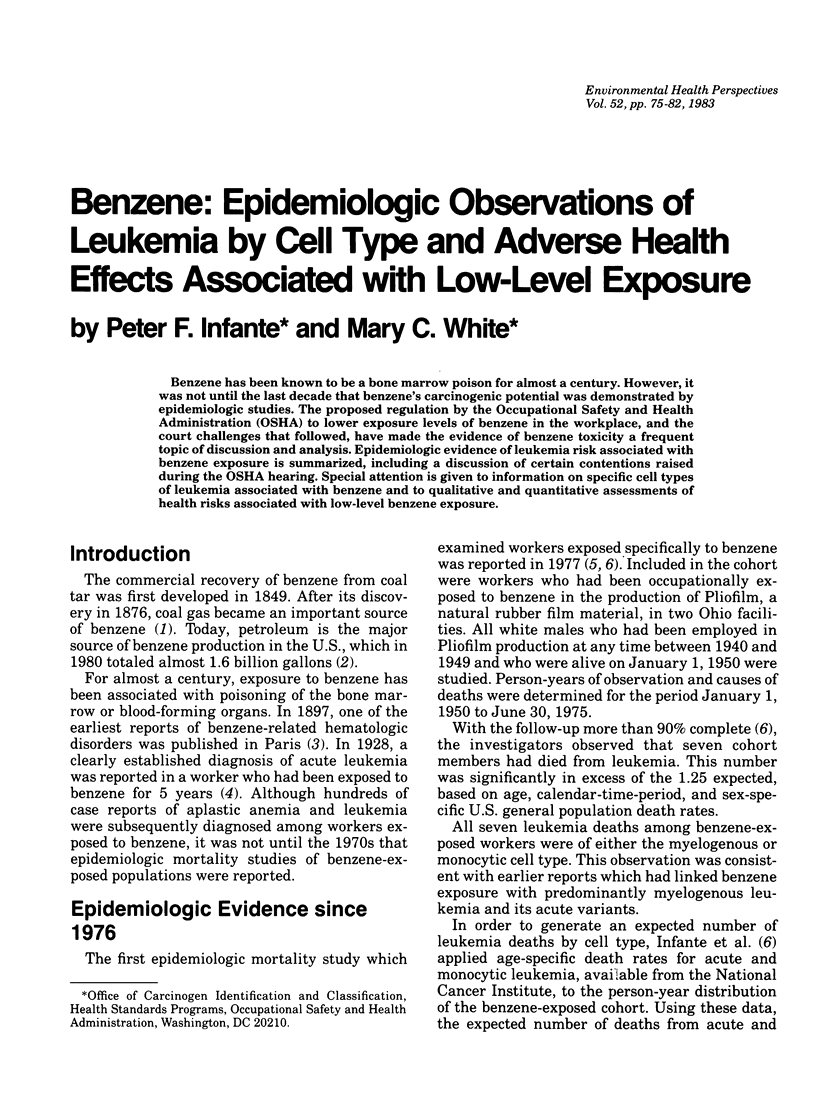
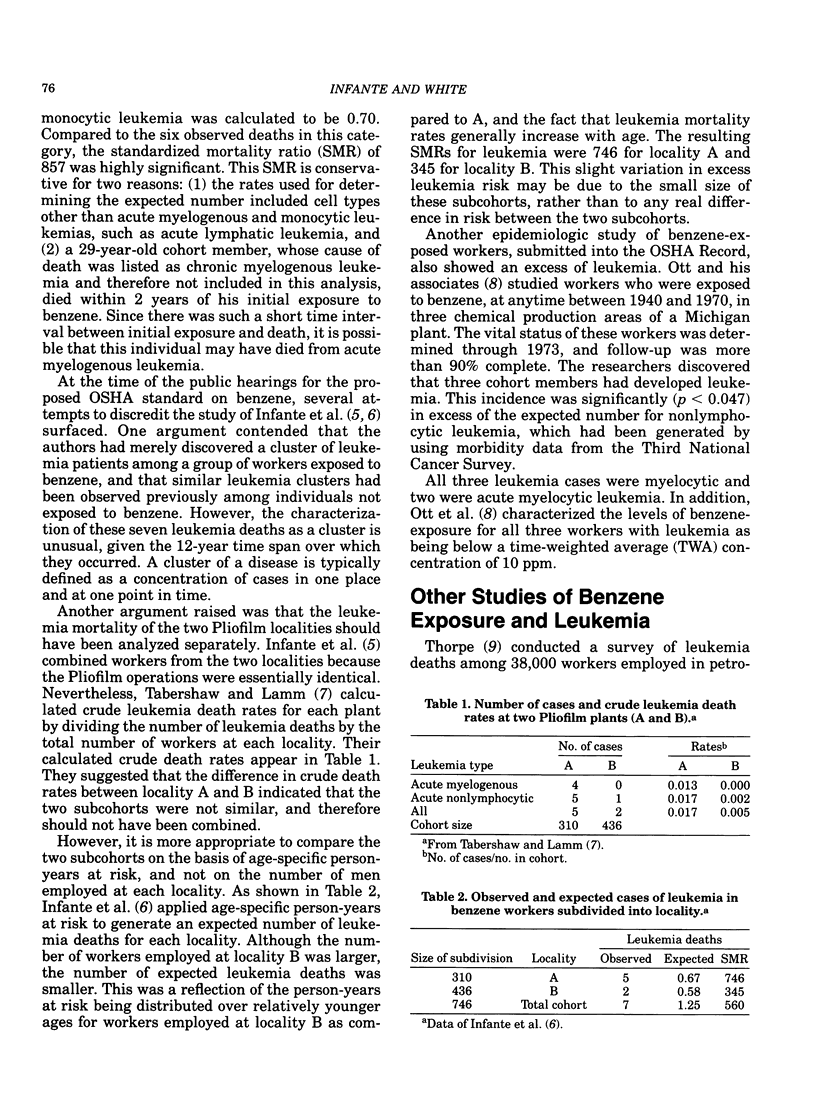
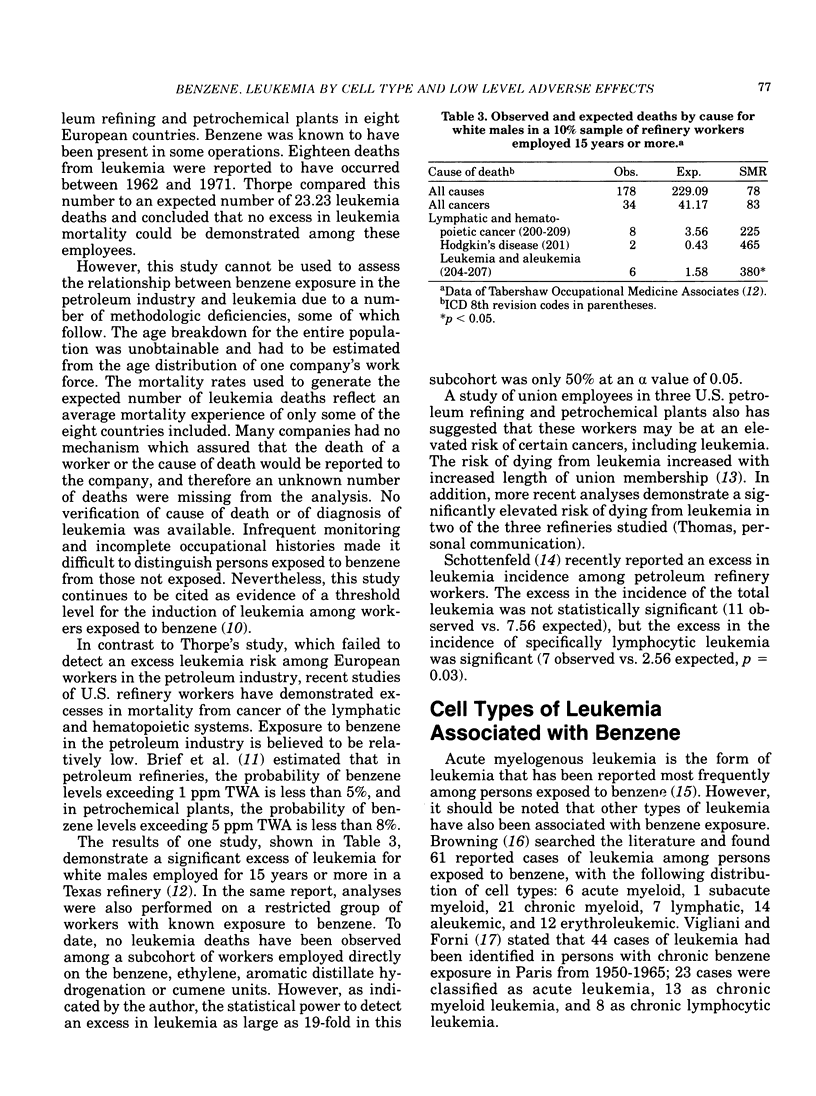
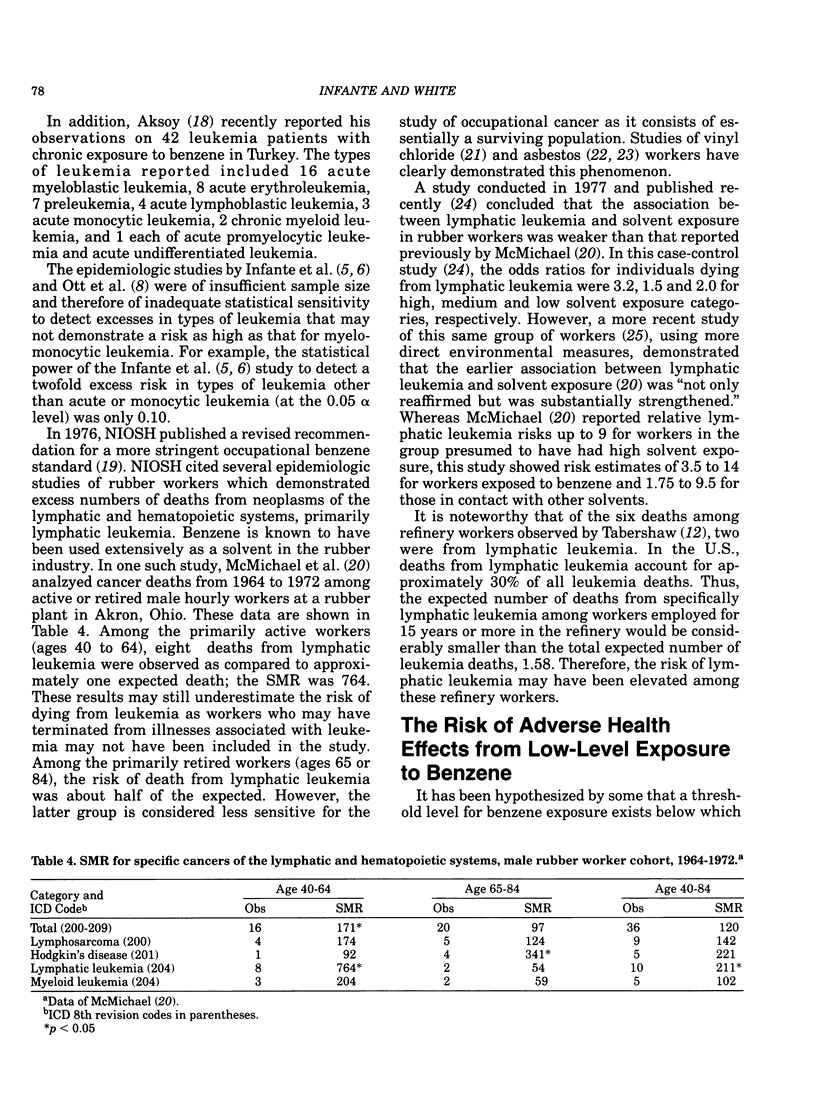
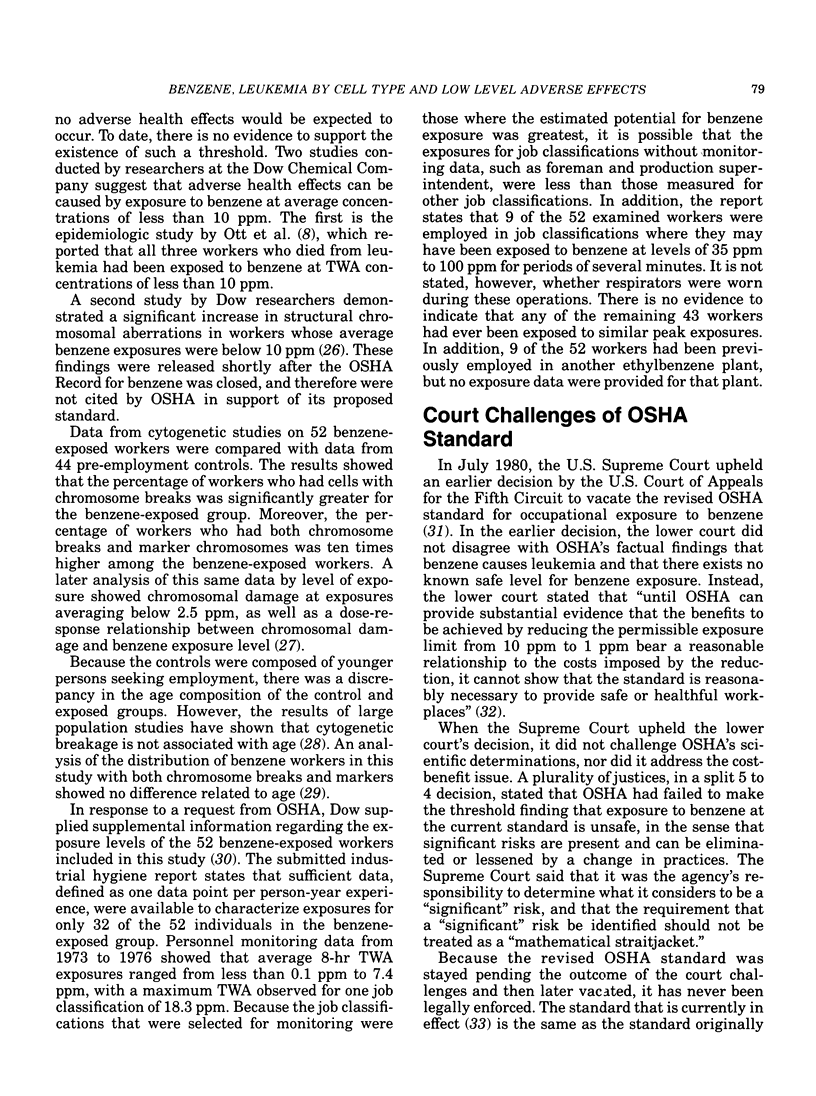
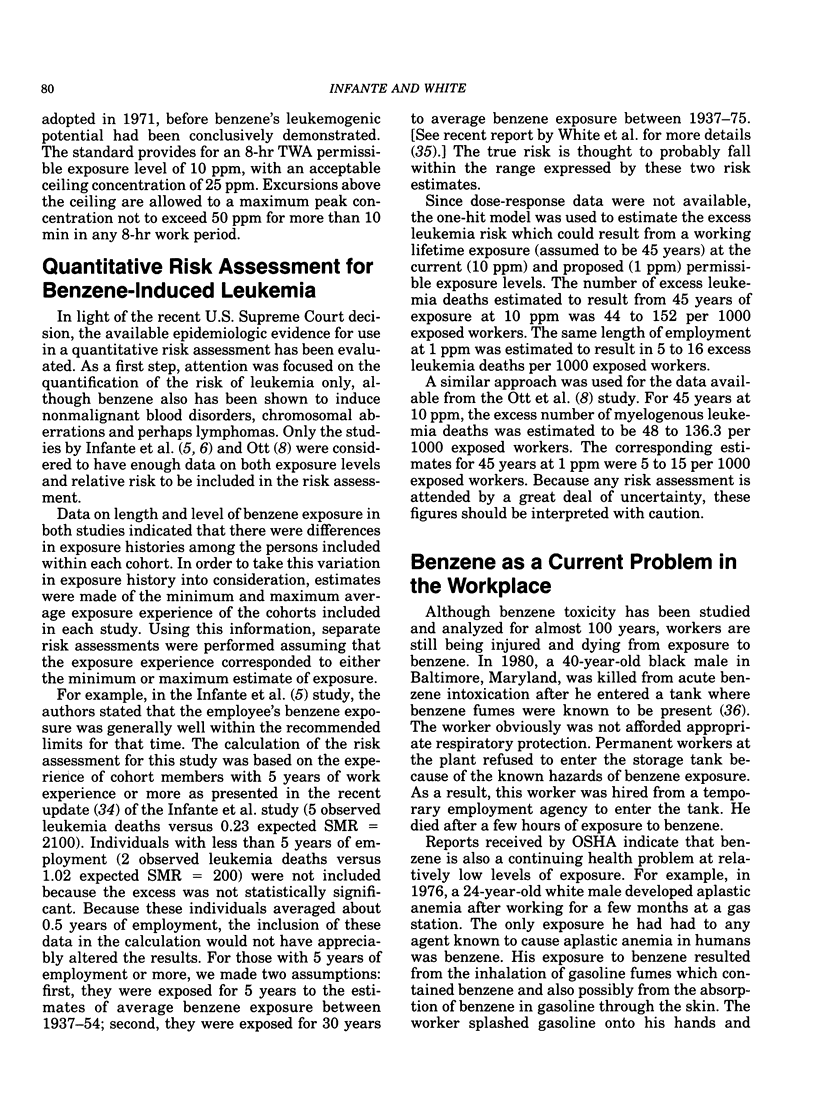
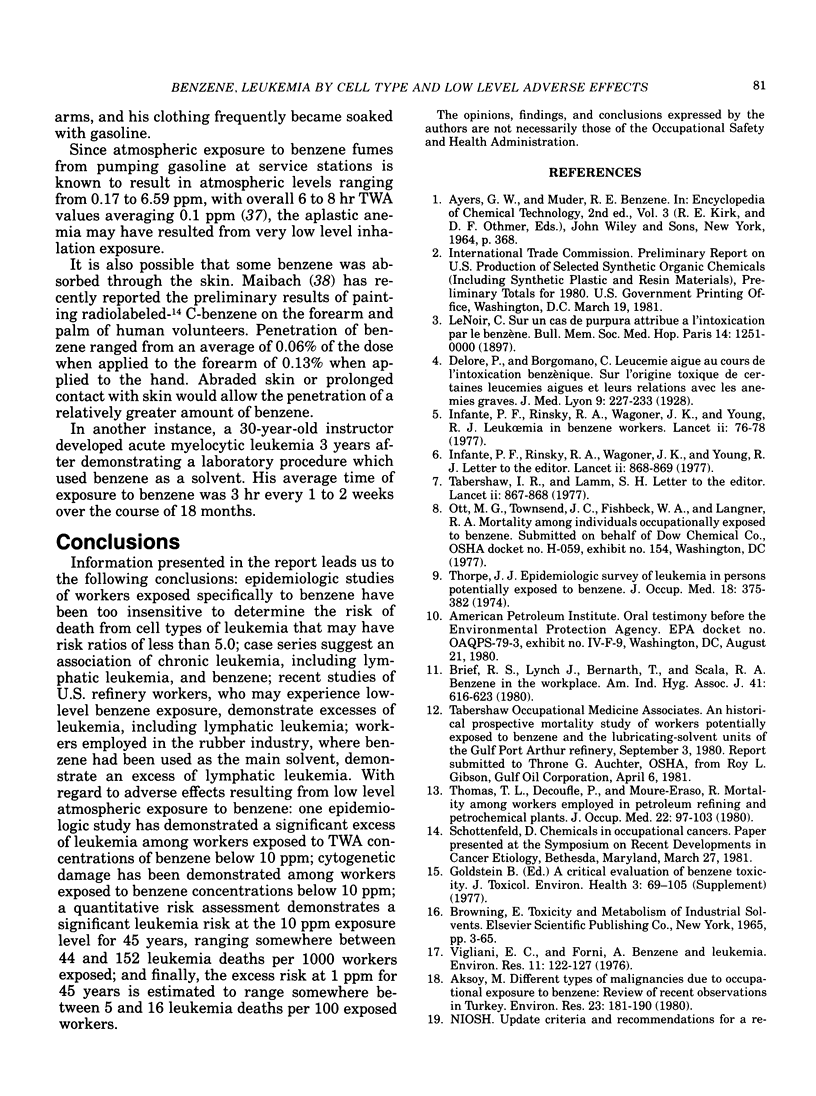
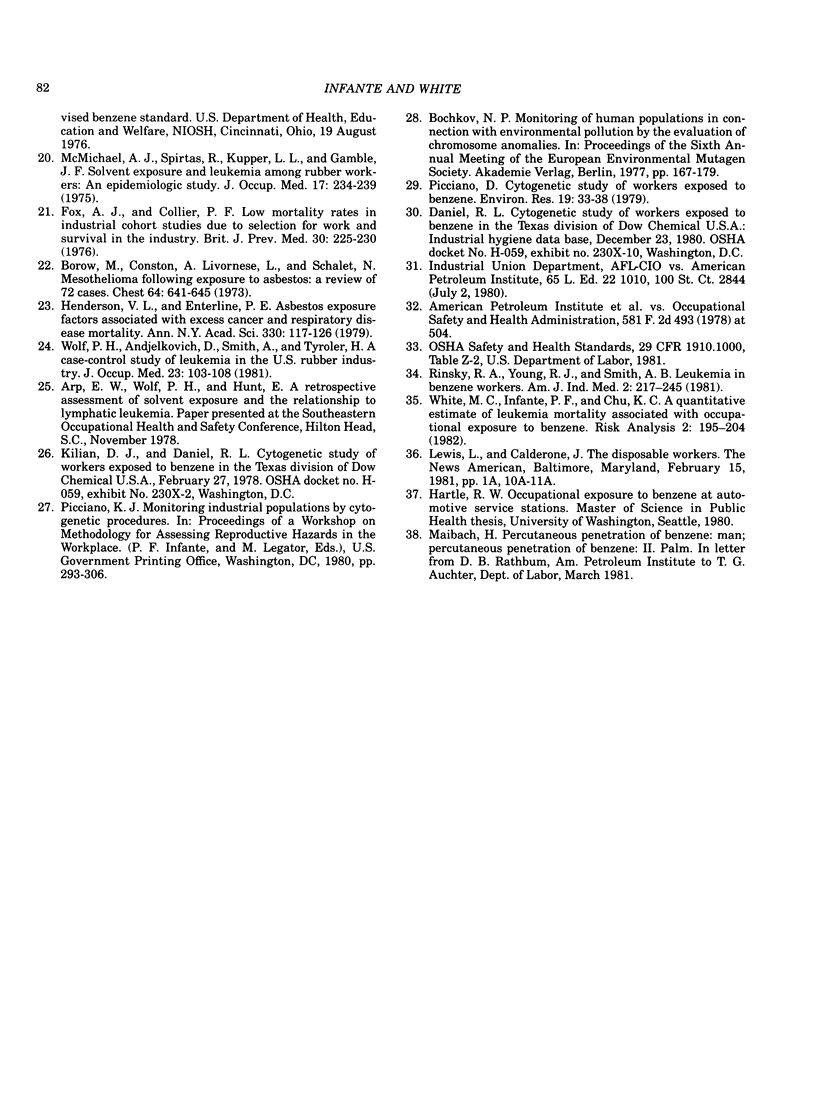
Selected References
These references are in PubMed. This may not be the complete list of references from this article.
- Aksoy M. Different types of malignancies due to occupational exposure to benzene: a review of recent observations in Turkey. Environ Res. 1980 Oct;23(1):181–190. doi: 10.1016/0013-9351(80)90104-8. [DOI] [PubMed] [Google Scholar]
- Borow M., Conston A., Livornese L., Schalet N. Mesothelioma following exposure to asbestos: a review of 72 cases. Chest. 1973 Nov;64(5):641–646. doi: 10.1378/chest.64.5.641. [DOI] [PubMed] [Google Scholar]
- Brief R. S., Lynch J., Bernath T., Scala R. A. Benzene in the workplace. Am Ind Hyg Assoc J. 1980 Sep;41(9):616–623. doi: 10.1080/15298668091425392. [DOI] [PubMed] [Google Scholar]
- Fox A. J., Collier P. F. Low mortality rates in industrial cohort studies due to selection for work and survival in the industry. Br J Prev Soc Med. 1976 Dec;30(4):225–230. doi: 10.1136/jech.30.4.225. [DOI] [PMC free article] [PubMed] [Google Scholar]
- Henderson V. L., Enterline P. E. Asbestos exposure: factors associated with excess cancer and respiratory disease mortality. Ann N Y Acad Sci. 1979;330:117–126. doi: 10.1111/j.1749-6632.1979.tb18712.x. [DOI] [PubMed] [Google Scholar]
- Infante P. F., Rinsky R. A., Wagoner J. K., Young R. J. Leukaemia in benzene workers. Lancet. 1977 Jul 9;2(8028):76–78. doi: 10.1016/s0140-6736(77)90074-5. [DOI] [PubMed] [Google Scholar]
- McMichael A. J., Spirtas R., Kupper L. L., Gamble J. F. Solvent exposure and leukemia among rubber workers: an epidemiologic study. J Occup Med. 1975 Apr;17(4):234–239. [PubMed] [Google Scholar]
- Picciano D. Cytogenetic study of workers exposed to benzene. Environ Res. 1979 Jun;19(1):33–38. doi: 10.1016/0013-9351(79)90031-8. [DOI] [PubMed] [Google Scholar]
- Rinsky R. A., Young R. J., Smith A. B. Leukemia in benzene workers. Am J Ind Med. 1981;2(3):217–245. doi: 10.1002/ajim.4700020305. [DOI] [PubMed] [Google Scholar]
- Tabershaw I. R., Lamm S. H. Benzene and leukaemia. Lancet. 1977 Oct 22;2(8043):867–869. [PubMed] [Google Scholar]
- Thomas T. L., Decoufle P., Moure-Eraso R. Mortality among workers employed in petroleum refining and petrochemical plants. J Occup Med. 1980 Feb;22(2):97–103. doi: 10.1097/00043764-198002000-00007. [DOI] [PubMed] [Google Scholar]
- Thorpe J. J. Epidemiologic survey of leukemia in persons potentially exposed to benzene. J Occup Med. 1974 Jun;16(6):375–382. [PubMed] [Google Scholar]
- Vigliani E. C., Forni A. Benzene and leukemia. Environ Res. 1976 Feb;11(1):122–127. doi: 10.1016/0013-9351(76)90115-8. [DOI] [PubMed] [Google Scholar]
- Wolf P. H., Andjelkovich D., Smith A., Tyroler H. A case-control study of leukemia in the U.S. rubber industry. J Occup Med. 1981 Feb;23(2):103–108. doi: 10.1097/00043764-198102000-00013. [DOI] [PubMed] [Google Scholar]


